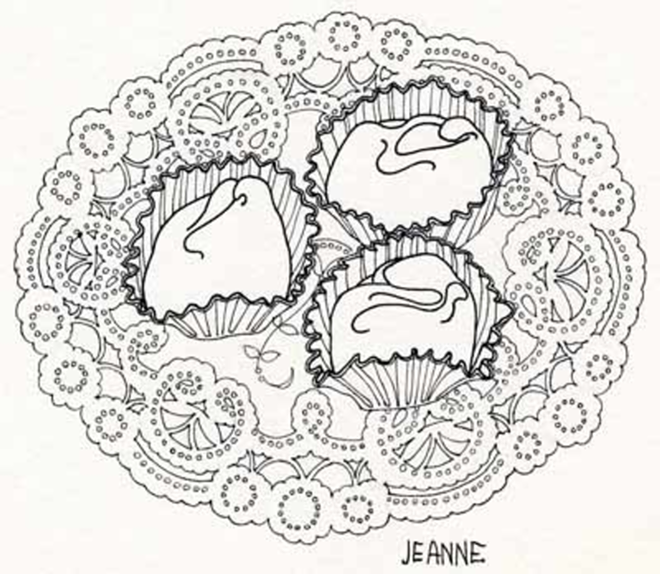Look homeward, Angel, now, and melt with ruth;
And, O ye dolphins, waft the hapless youth.
—John Milton, Lycidas (1645)
Last year, on Valentine's Day, I was sipping a cup of coffee surrounded by beautiful naked young women, like water nymphs from Utica, or at least Renaissance angels. Naked young men, too. Elfin hats perched on their heads, and their snow-covered boots left wet prints on the stone floor. They were waving homemade bows and arrows, and some strange musical instruments (I'm not sure which; it was hard to concentrate). A blonde girl touched my head with a wand — who knows for what, but I felt lucky. The coffee tasted better.
Thomas Wolfe may be right — that you can't go home again — but you can visit, and I was spending a week in February as writer-in-residence at my alma mater, Hamilton College. I had trudged through seven inches of snow to the ancient Commons Dining Hall, the same one I used to nod at with my hung-over companions (class of '55) over a half-century ago. Back then, we never danced naked at lunchtime, so I can only conclude this was the girls' idea: Hamilton went co-ed in 1978. We must have had Valentine's Day back in the all-boys' era, but I don't remember it. Now, apparently, this bacchanalian dance through the solemn old room has become a tradition.
Hamilton is a small college in upstate New York (near Utica!) that looks like what colleges are supposed to look like: an aesthetically satisfying connection between the past and future, the traditional and the radical. A rare three-story chapel, built in 1827, stands near a glass-fronted science building. It's even on a hill, above a little town with a village green, dignified inn and steeply sloped Episcopal Church (now with a female minister and serving fair trade coffee). John Nichols (Class of '62) set his novel, The Sterile Cuckoo, on campus here, made into a picturesque movie starring the young Liza Minnelli.
... I'm sitting by myself. I haven't yet met many students, even with clothes on. I could have gone elsewhere, but have a free pass to the dining room, and it's too cold and snowy for a Floridian to wander far for a bite to eat. I was beating a circular path from the Bristol Campus Center, where I was staying, to the commons, to the library (for the New York Times), to Root Hall (for my classroom), and back to Bristol.
Commons Dining Hall is a room where Beowulf would have enjoyed waving an ox-leg around (or Grendel's torn-off arm), and in the 1950s my classmates and I didn't behave much better, like the deprived and depraved monks that we were. The hall features a huge fireplace (for the ox), and a high Gothic ceiling with an ornate chandelier, surrounded by dozens of deep-set stained-glass windows.
Sitting toward the back, I feel awkward and sorry for myself, half listening to the bursts of laughter erupting at some of the other tables. When had I morphed into this thin-skinned elderly misfit, sitting alone with the New York Times propped up by his lukewarm coffee?
And then the commotion starts, up front, gusting from table to table accompanied by whistles, shouts and cheers. As the noise surges closer, I see the smiling dancers, around 15 of them, gracefully weaving around the heavy scarred tables. Then they dance around me, I'm lightly knighted, and they weave on, past Marge, the frowning ticket-taker at the door, through the heavy stone pillars and into the snow, toward the nearby dormitories. Too late, I wonder if any of them were my students — I hadn't noticed! — or are poets too shy to be streakers?
After a while, I pull on my coat and head out, past Marge. She shakes her head, to show she doesn't approve of these modern shenanigans; but it's hard not to smile, so she says, "Well, at least they're healthy-looking."
"And brave, too," I add. We don't know where they went after they danced outdoors, but hope they had clothes nearby or they'll wind up in the Infirmary. Somehow, I don't think so.
I'm still smiling when I get to the library, walking past the heavy stones of North Dorm, my old haunt, head hunched against the wind. In these dark dormitories and beer-soaked fraternity halls, below the towering ancient oaks and elms, and the shadow of the three-story chapel, I had heard my calling; and though writing poetry is a strange, evasive and maddening profession, I was then, and remain now, 54 years later, profoundly grateful. At the library, I decide to look up some love poems, remembering it's Valentine's Day: Time to call Jeanne.
Valentine's Day is a hopeful day — not in an unreal way, like World Peace Day or End of Stupidity Day. Not at all. There really is someone — at least for a while — for everyone, as the roiling history of the world and its poetry shows over and over again. Here's the ending of a new poem by Michael Blumenthal, called "That Everyone is Beautiful to Someone":
... and it felt good to know that — even
if thousands of companies were downsizing
at the expense of the least powerful while the rich
went on shopping, impervious to each misery
that surrounds them — that somewhere
someone is waiting for you.
Peter Meinke's (www.petermeinke.com) most recent collection of poems is The Contracted World: New & More Selected Poems (U. of Pittsburgh Press). Prior to Valentine's Day he was last seen peering through the window of the Schakolad Chocolate Factory on Central Avenue.


